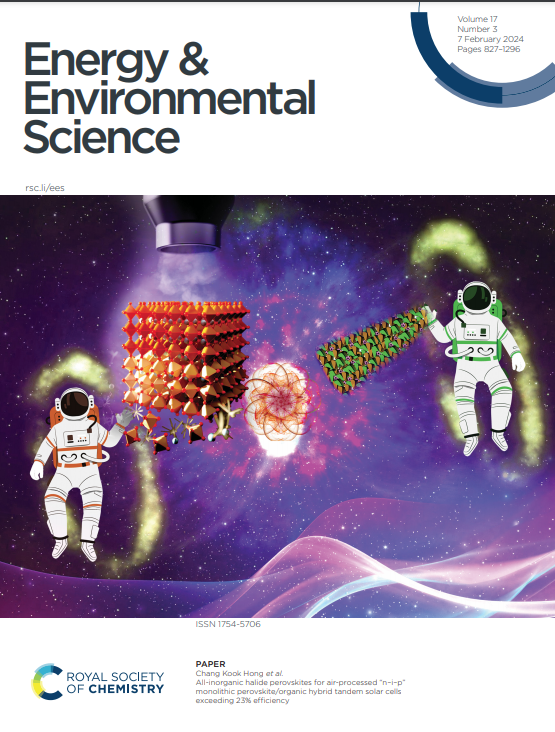Regulating local chemical softness of collector to homogenize Li deposition for anode-free Li-metal batteries
IF 32.4
1区 材料科学
Q1 CHEMISTRY, MULTIDISCIPLINARY
引用次数: 0
Abstract
Regulating the surface structure of collector to synergistically reduce the nucleation and lateral growth barrier of Li+ electrodeposition is key to long-cycle anode-free Li-metal batteries (AFLMB), but its adjusting mechanism and modulation remains formidable challenge. Herein, a previously-unreported heterogeneous collector with hard-base sites and soft-acidity sites is proposed to enhance chemical interaction with hard-acid Li+ and soft-base Li nuclei, respectively. Theoretical analysis demonstrates that the addition of Co single atoms into N-C host improves to the hardness of N bases and the softness of carbon matrix. According to the results of operando microscopy and electrochemical measurement, the HBSA-Co SAs collector with controlled local chemical softness substantially reduce nucleation/growth barriers without any dendrite morphology observed. The NCM811-based Li metal cells with a high cathode area capacity of 15 mAh cm-2 and limited lithium excess achieve a superior capacity retention rate of 98.8% after 150 cycles. This finding provides an avenue to rationally design highly efficient collector for AFLMB.调节集流体的局部化学软度,使无阳极锂金属电池的锂沉积均匀化
调节集流体的表面结构以协同降低 Li+ 电沉积的成核和横向生长障碍是实现长周期无阳极锂金属电池(AFLMB)的关键,但其调节机制和调控方法仍是一项艰巨的挑战。本文提出了一种以前未报道过的具有硬碱位点和软酸位点的异质集流体,以分别增强与硬酸锂核和软碱锂核的化学作用。理论分析表明,在 N-C 宿主中加入 Co 单原子可提高 N 碱的硬度和碳基质的软度。根据操作显微镜和电化学测量的结果,具有可控局部化学软度的 HBSA-Co SAs 收集器大大降低了成核/生长障碍,且未观察到任何枝晶形态。基于 NCM811 的锂金属电池具有 15 mAh cm-2 的高正极面积容量和有限的锂过量,经过 150 次循环后,容量保持率高达 98.8%。这一发现为合理设计 AFLMB 的高效集电体提供了途径。
本文章由计算机程序翻译,如有差异,请以英文原文为准。
求助全文
约1分钟内获得全文
求助全文
来源期刊

Energy & Environmental Science
化学-工程:化工
CiteScore
50.50
自引率
2.20%
发文量
349
审稿时长
2.2 months
期刊介绍:
Energy & Environmental Science, a peer-reviewed scientific journal, publishes original research and review articles covering interdisciplinary topics in the (bio)chemical and (bio)physical sciences, as well as chemical engineering disciplines. Published monthly by the Royal Society of Chemistry (RSC), a not-for-profit publisher, Energy & Environmental Science is recognized as a leading journal. It boasts an impressive impact factor of 8.500 as of 2009, ranking 8th among 140 journals in the category "Chemistry, Multidisciplinary," second among 71 journals in "Energy & Fuels," second among 128 journals in "Engineering, Chemical," and first among 181 scientific journals in "Environmental Sciences."
Energy & Environmental Science publishes various types of articles, including Research Papers (original scientific work), Review Articles, Perspectives, and Minireviews (feature review-type articles of broad interest), Communications (original scientific work of an urgent nature), Opinions (personal, often speculative viewpoints or hypotheses on current topics), and Analysis Articles (in-depth examination of energy-related issues).
 求助内容:
求助内容: 应助结果提醒方式:
应助结果提醒方式:


